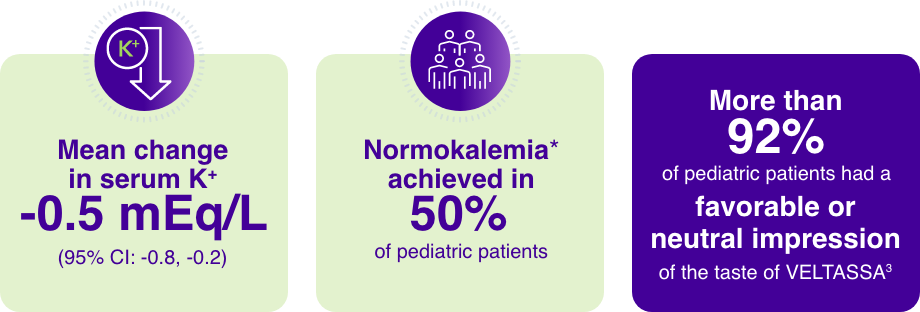Reduced serum K+ in pediatric patients
VELTASSA is the only K+ binder with a formal pediatric indication (12 to 17 years of age)1,2In the EMERALD-1 study, after the 2-week dose-finding phase:

- Mean (SD) baseline serum K+ was 5.5 mEq/L (0.3 mEq/L)
- VELTASSA dose was titrated, as needed, based on serum K+ levels and was assessed on days 3, 7, and 14 with the aim of maintaining serum K+ in the target range*
- All 14 patients 12 to 17 years of age completed the dose-finding phase
- Median dose at day 14 was 4.2 g/day
*Normokalemia was defined as serum K+ within the target range of 3.8 to < 5.0 mEq/L.
Study design
An open-label, single-arm study in pediatric patients 12 to 17 years of age with CKD and hyperkalemia evaluated the potassium-lowering effect of VELTASSA. The study included an initial 14-day dose-finding phase, followed by an up to 24-week long-term treatment phase and a 2-week follow-up period. VELTASSA was given once daily as a powder for oral suspension.
Initial dose was at 4.2 g/day and titrated as needed to 8.4 g/day.
The mean age was 14.5 years, 79% were male, and all were white. The average weight at baseline was 51 kg and 57% of patients had a baseline eGFR < 30 mL/min/1.73 m2. Approximately 57% were on RAAS inhibitor therapy at baseline.
VELTASSA acts where K+ is most abundant
Next
